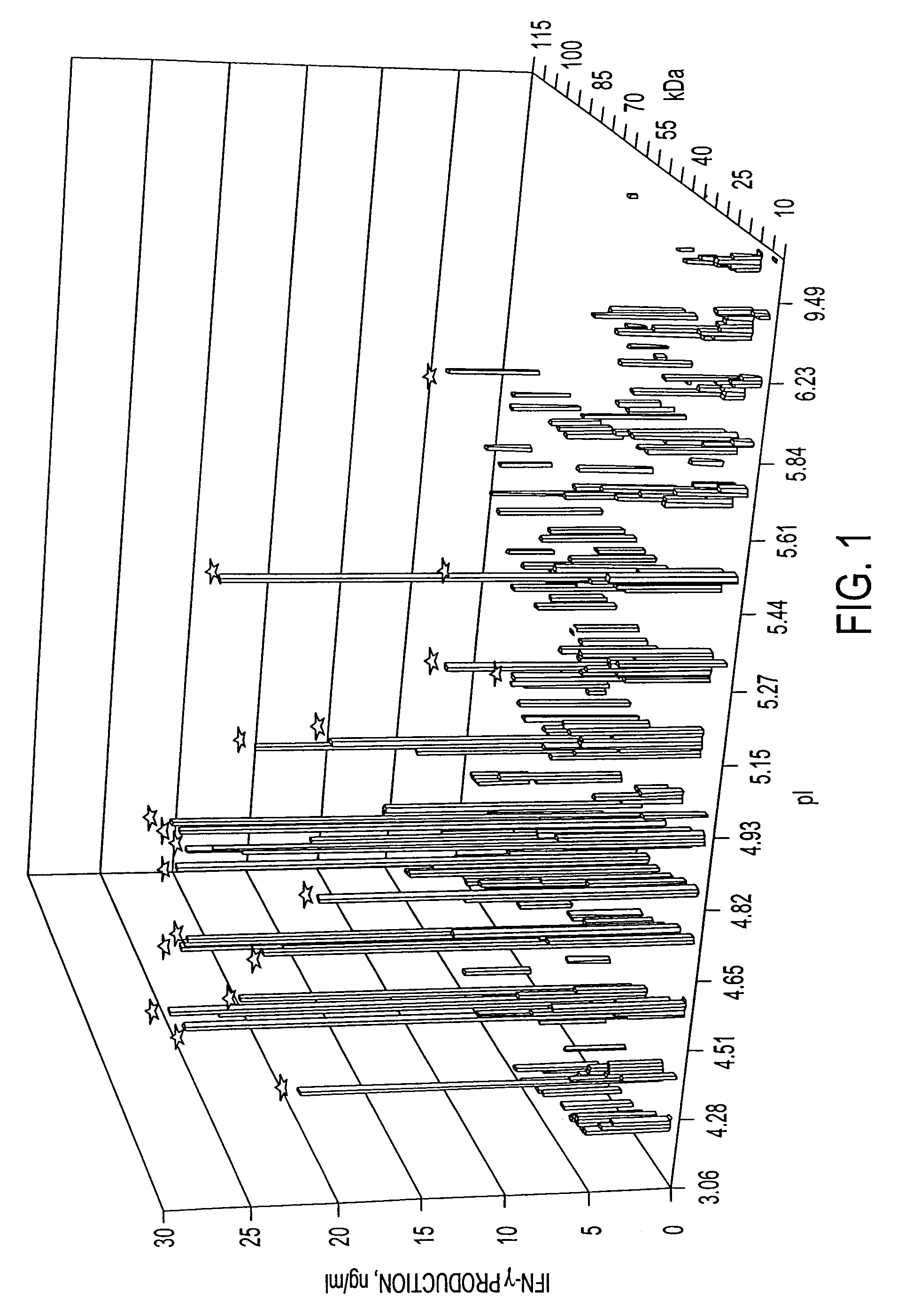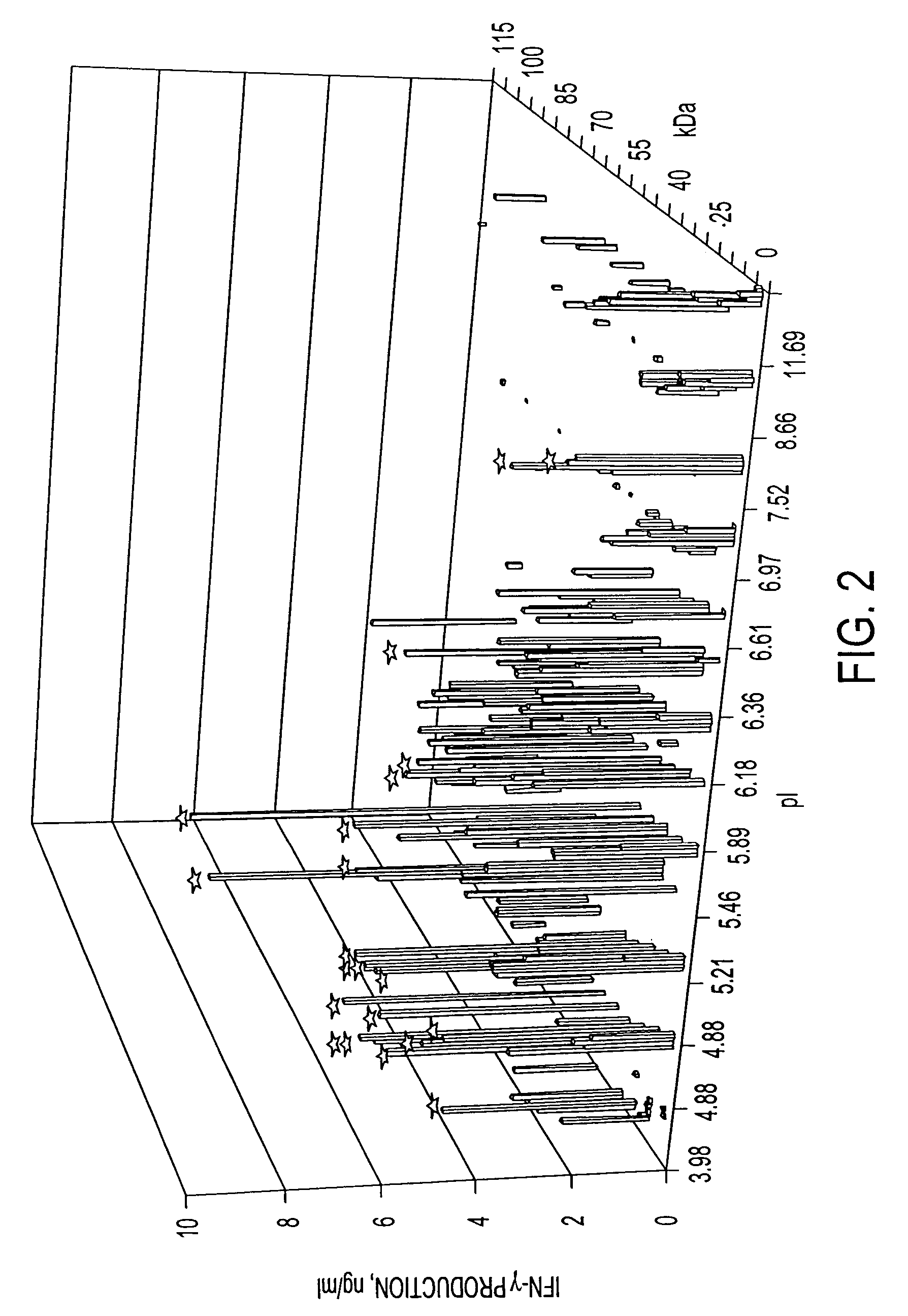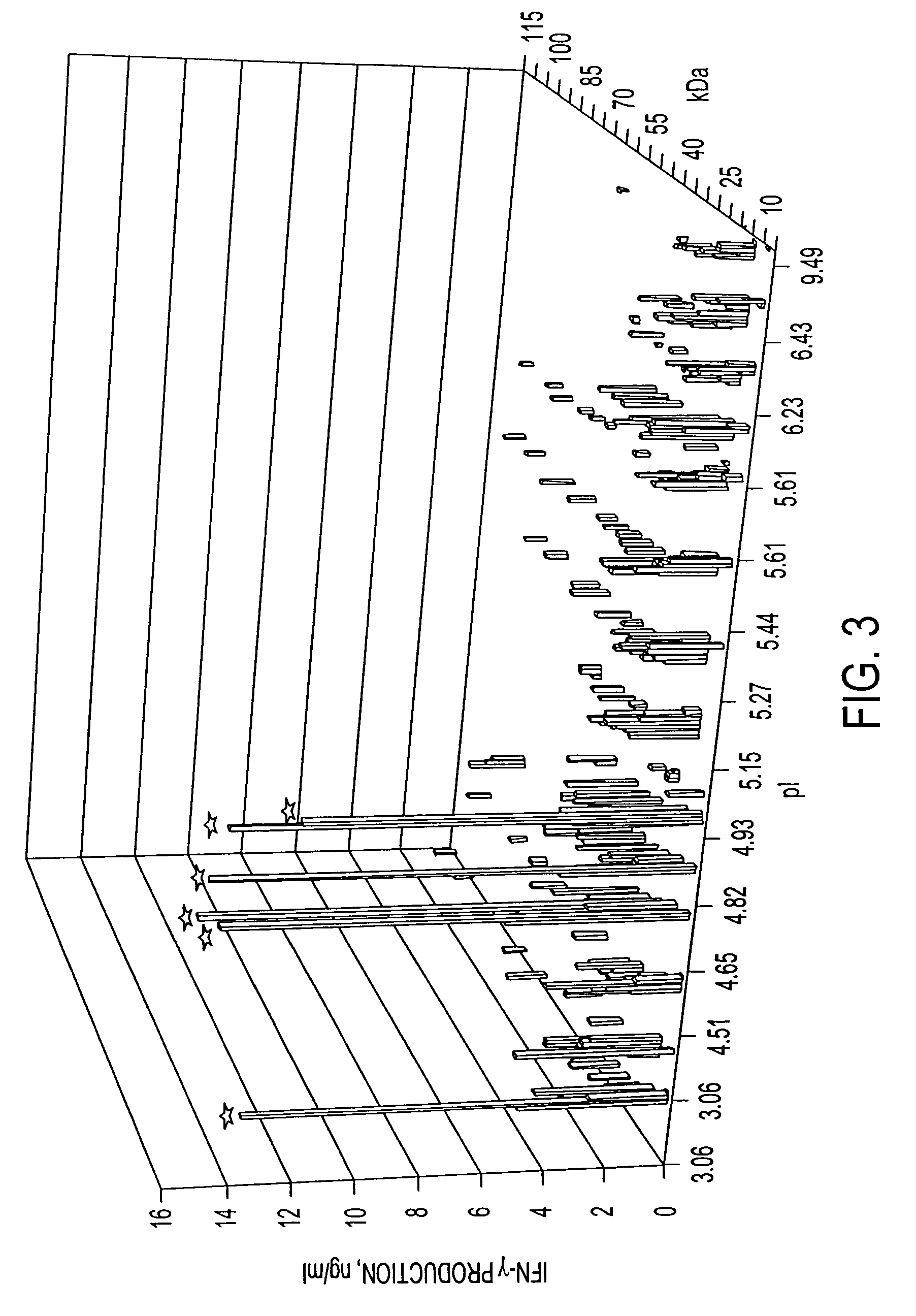Mid-life vaccine and methods for boosting anti-mycobacterial immunity
- Summary
- Abstract
- Description
- Claims
- Application Information
AI Technical Summary
Benefits of technology
Problems solved by technology
Method used
Image
Examples
example i
Materials and Methods
Growth of M. tuberculosis, and Preparation of Culture Filtrate and Cytosolic Proteins
[0159]M. tuberculosis H37Rv (ATCC 27294) was obtained from the American Type Culture Collection (Rockville, Md.). Initially, this strain was inoculated from a 1-mL frozen stock of approximately 108 CFU / mL into 10 mL of glycerol-alanine-salts medium (Takayama, K et al., J. Lipid Res. 1975, 16:308-317). This initial culture was expanded to a total of 30 liters as described by Sonnenberg et al., supra. After incubation at 37° C. for 14 days with gentle agitation the culture supernatant was separated from the cells by filtration through a 0.2 μm membrane. The cells were collected, washed three times with PBS pH 7.4 and frozen at −70° C. until needed. The culture filtrate was concentrated by ultrafiltration with a 10 kDa molecular cut off membrane, dialyzed against 10 mM ammonium bicarbonate (Dobos, K M et al., Infect. Immun. 1996, 63:2846-285319), and the protein concentration deter...
example ii
2-D Liquid Phase Electrophoresis of Culture Filtrate and Cytosolic Proteins
[0166]To ensure sufficient protein quantities for both immunological analysis and molecular identification, large aliquots of CFPs (500 mg) and cytosolic proteins (250 mg) were used as starting material. Initial experiments demonstrated quantities of cytosolic proteins greater than 150 mg resulted in excessive precipitation during preparative IEF using the Rotofor apparatus. Moreover, increasing the detergent concentration of the IEF buffer did not solve this problem. Therefore, two preparative IEF runs were performed using 100 mg and 150 mg of the cytosolic proteins. A smaller total quantity of cytosolic protein was used in order to minimize the number of fractions that required pooling and to reduce potential distortion of IEF resolution. The 20 fractions collected from each run were analyzed by SDS-PAGE and silver staining, and like fractions were pooled. A similar problem of protein precipitation was not ...
example iii
Production of IFNγ in Response to 2-D LPE Fractions
[0168]Prior to testing for T cell stimulation the 2-D LPE fractions were filter sterilized, aliquoted and lyophilized. Previously, it had been demonstrated that proteins isolated with the Whole Gel Eluter were relatively free of SDS and were suitable for direct use in T cell assays (Andersen et al., supra). Analysis of lymphocytes from uninfected C57B1 / 6 mice by microscopy and assessment of cell growth using the Alamar Blue redox reaction (Ahmed, S A et al., J. Immunol. Methods. 1994, 170:211-224) revealed that the SDS concentrations present in these 2-D LPE fractions did not adversely affect the cells, consistent with the findings of others.
[0169]To assess T-cell reactivity to the 2-D LPE fractions, proteins were aliquoted (2 μg / well) in triplicate in 96 well plates and incubated for four days with the lymphocytes Mtb infected or uninfected mice, at which time the level of IFNγ present in the culture supernatant was measured. IFNγ ...
PUM
| Property | Measurement | Unit |
|---|---|---|
| Fraction | aaaaa | aaaaa |
| Time | aaaaa | aaaaa |
| Time | aaaaa | aaaaa |
Abstract
Description
Claims
Application Information
 Login to View More
Login to View More - R&D
- Intellectual Property
- Life Sciences
- Materials
- Tech Scout
- Unparalleled Data Quality
- Higher Quality Content
- 60% Fewer Hallucinations
Browse by: Latest US Patents, China's latest patents, Technical Efficacy Thesaurus, Application Domain, Technology Topic, Popular Technical Reports.
© 2025 PatSnap. All rights reserved.Legal|Privacy policy|Modern Slavery Act Transparency Statement|Sitemap|About US| Contact US: help@patsnap.com



